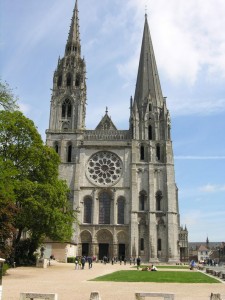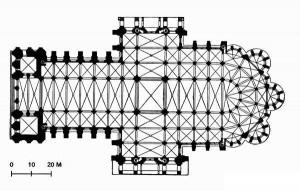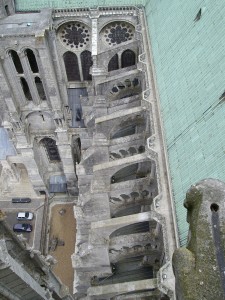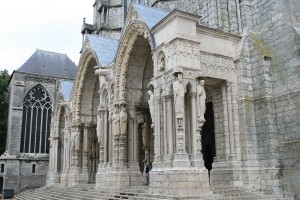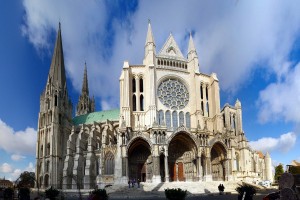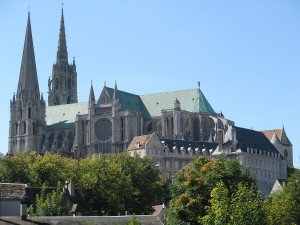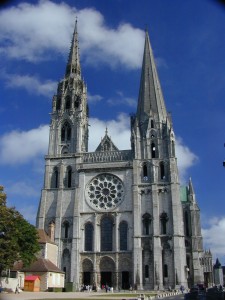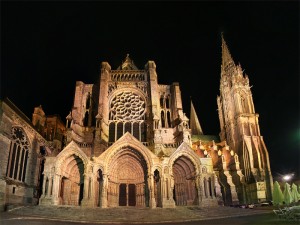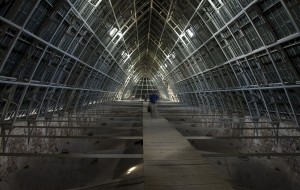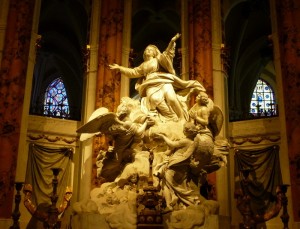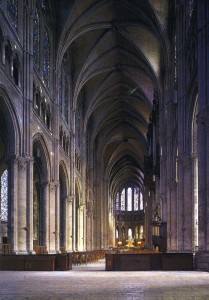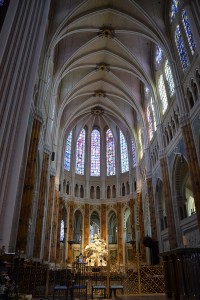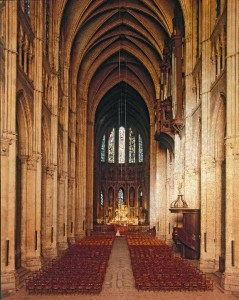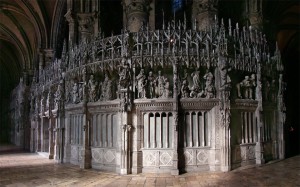Written by Soudip
September 1st 2014Other Places
You Are Here
Home > France > Pont du Gard Historical Facts and PicturesChartres Cathedral Historical Facts and Pictures
Located 80 km. south-west of Paris, the Catholic church of Notre Dame, the Chartres Cathedral is also called Cathedral Brasilica of our Lady of Chartres. Listed as a UNESCO World Heritage Site, this medieval cathedral exemplifies one of the finest representations of French Gothic architecture.
Architecture and Design
Displaying the features of New Gothic Architectural structures, the Chartres Cathedral is a landmark for the development of western art. Heavy flying buttresses dominate the outer structure of the building, allowing the architects to increase the size of the windows. The western side is consisted of a 349 ft. high plan pyramid and a flamboyant spire. The 3 great façade, decked with a number of sculpted figures illustrate key theological narratives and themes.
Along with its supreme architecture, the cathedral is also renowned for its exceptionally well-decorated rose windows and stained glass. Originated in 12th century France, the rose window had been a major structure of Gothic Architecture. Enriched with high Gothic elements the Chartres Cathedral contains 3 rose windows with symbolic significance. The western rose window exhibits the traditional west façade theme of the Last Judgment, with Christ as the judge is showed in the oculus. The rose window on the north transept portrays the Virgin and Child in the central oculus, surrounded by twelve petal-shaped small windows. The rose window on the southern transept shows Christ raising his right hand in benediction with adoring angels surrounding him.
Interior of Chartres Cathedral
The remarkably decorated interior of the cathedral includes ribbed vaults, pointed arches, side aisles, gallery, triforium, crossing apes, ambulatory, narthex and a 16-meter wide nave of pure thirteenth century ogival style filled by a brilliantly preserved labyrinth of 12.9 meters in diameter.
The cathedral retains most of its original structures, as it was not affected much in the passage of time, apart from a fire accident that damaged the roof of the structure in 1836. During the 19th century a lot of renovation work took place and in 1979 the cathedral was included as one of the World Heritage Sites of UNESCO.
Category
FranceWritten by Soudip
September 1st 2014









